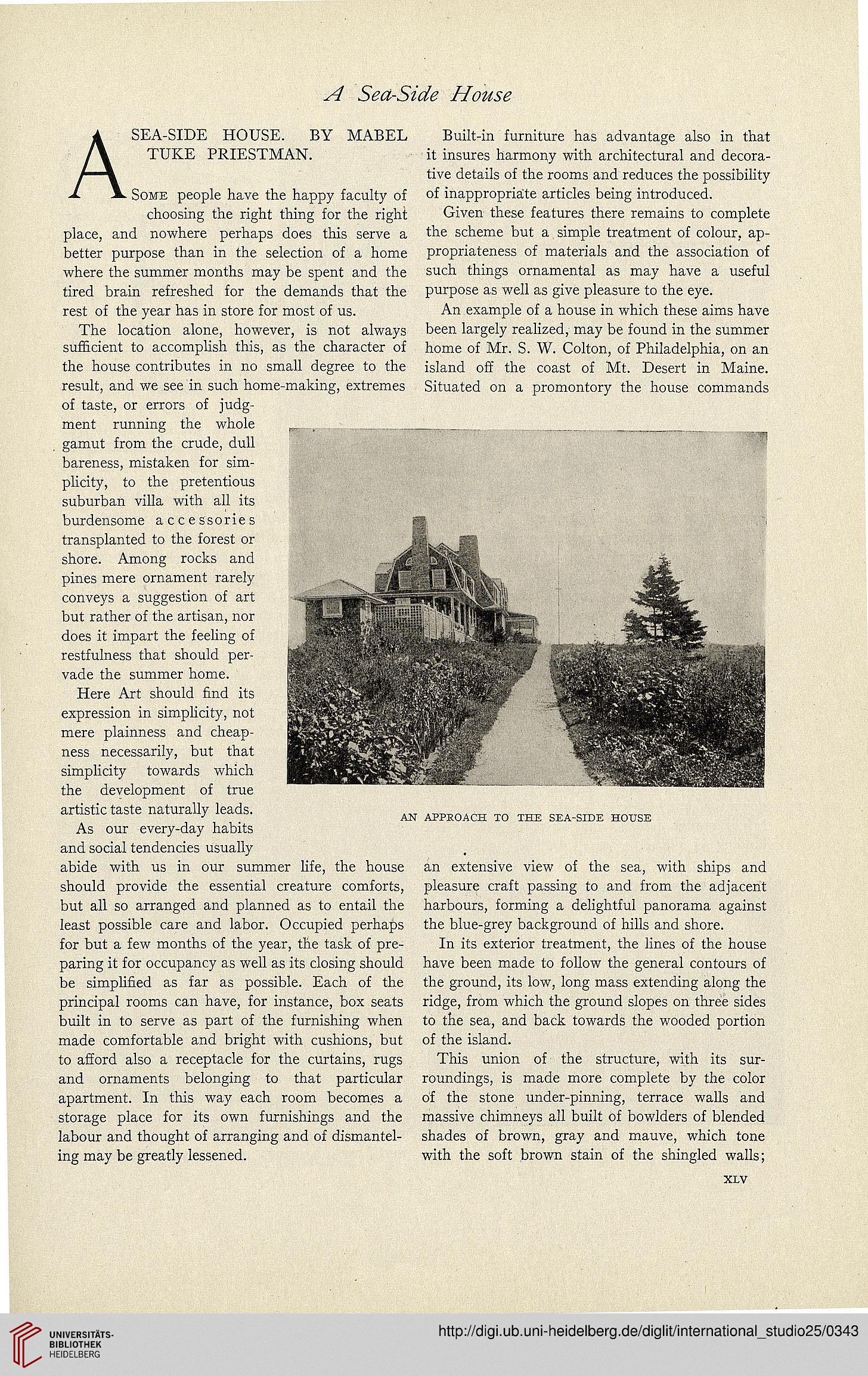SEA-SIDE HOUSE. BY MABEL
TUKE PRIESTMAN.
SOME people have the happy faculty of
choosing the right thing for the right
place, and nowhere perhaps does this serve a
better purpose than in the selection of a home
where the summer months may be spent and the
tired brain refreshed for the demands that the
rest of the year has in store for most of us.
The location alone, however, is not always
sufficient to accomplish this, as the character of
the house contributes in no small degree to the
result, and we see in such home-making, extremes
of taste, or errors of judg-
ment running the whole
gamut from the crude, dull
bareness, mistaken for sim-
plicity, to the pretentious
suburban villa with all its
burdensome accessories
transplanted to the forest or
shore. Among rocks and
pines mere ornament rarely
conveys a suggestion of art
but rather of the artisan, nor
does it impart the feeling of
restfulness that should per-
vade the summer home.
Here Art should find its
expression in simplicity, not
mere plainness and cheap-
ness necessarily, but that
simplicity towards which
the development of true
artistic taste naturally leads.
As our every-day habits
and social tendencies usually
abide with us in our summer life, the house
should provide the essential creature comforts,
but all so arranged and planned as to entail the
least possible care and labor. Occupied perhaps
for but a few months of the year, the task of pre-
paring it for occupancy as well as its closing should
be simplified as far as possible. Each of the
principal rooms can have, for instance, box seats
built in to serve as part of the furnishing when
made comfortable and bright with cushions, but
to afford also a receptacle for the curtains, rugs
and ornaments belonging to that particular
apartment. In this way each room becomes a
storage place for its own furnishings and the
labour and thought of arranging and of dismantel-
ing may be greatly lessened.
Built-in furniture has advantage also in that
it insures harmony with architectural and decora-
tive details of the rooms and reduces the possibility
of inappropriate articles being introduced.
Given these features there remains to complete
the scheme but a simple treatment of colour, ap-
propriateness of materials and the association of
such things ornamental as may have a useful
purpose as well as give pleasure to the eye.
An example of a house in which these aims have
been largely realized, may be found in the summer
home of Mr. S. W. Colton, of Philadelphia, on an
island off the coast of Mt. Desert in Maine.
Situated on a promontory the house commands
AN APPROACH TO THE SEA-SIDE HOUSE
an extensive view of the sea, with ships and
pleasure craft passing to and from the adjacent
harbours, forming a delightful panorama against
the blue-grey background of hills and shore.
In its exterior treatment, the lines of the house
have been made to follow the general contours of
the ground, its low, long mass extending along the
ridge, from which the ground slopes on three sides
to the sea, and back towards the wooded portion
of the island.
This union of the structure, with its sur-
roundings, is made more complete by the color
of the stone under-pinning, terrace walls and
massive chimneys all built of bowlders of blended
shades of brown, gray and mauve, which tone
with the soft brown stain of the shingled walls;
XLV




